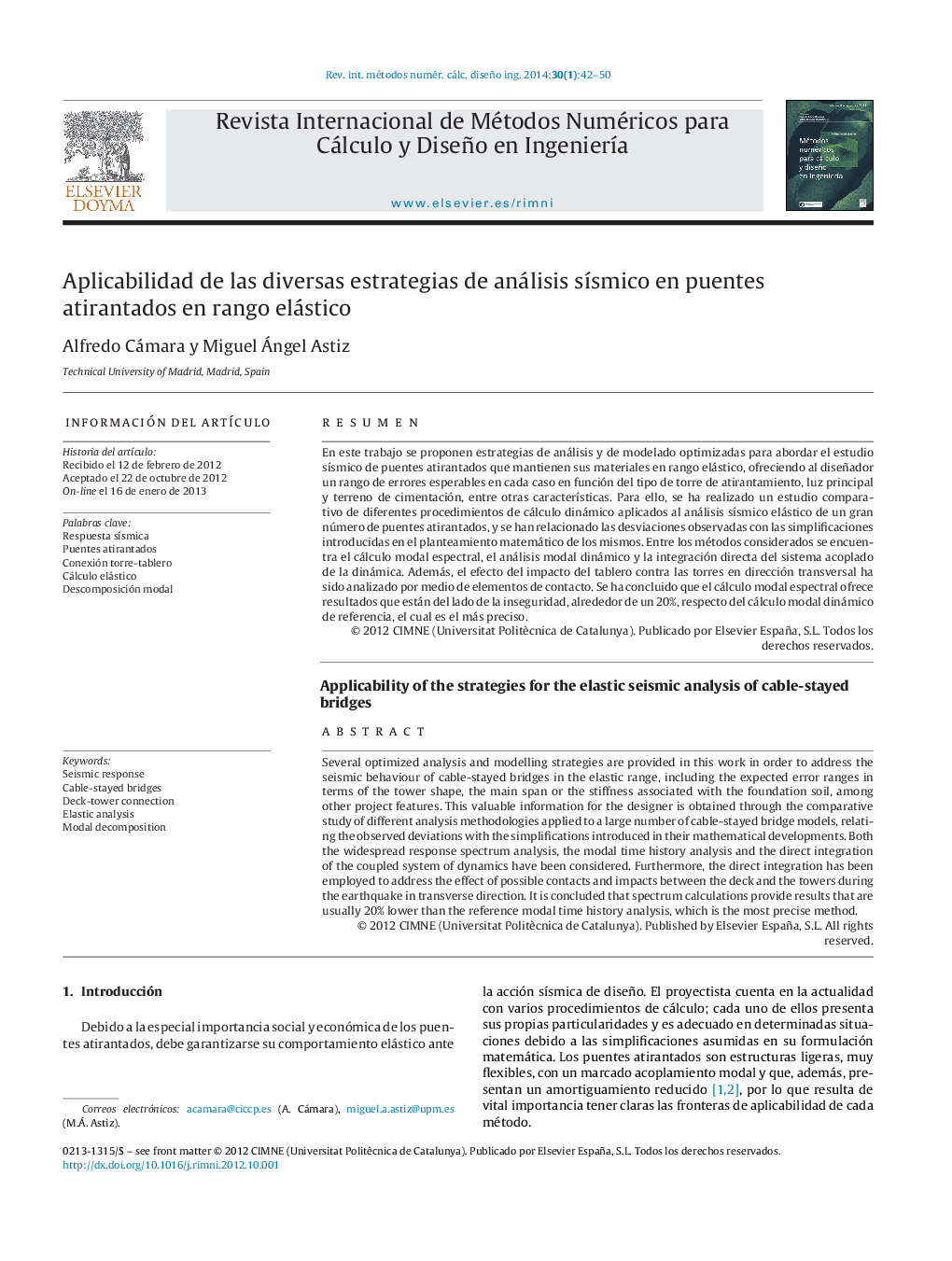| کد مقاله | کد نشریه | سال انتشار | مقاله انگلیسی | نسخه تمام متن |
|---|---|---|---|---|
| 1702597 | 1012343 | 2014 | 9 صفحه PDF | دانلود رایگان |

ResumenEn este trabajo se proponen estrategias de análisis y de modelado optimizadas para abordar el estudio sísmico de puentes atirantados que mantienen sus materiales en rango elástico, ofreciendo al diseñador un rango de errores esperables en cada caso en función del tipo de torre de atirantamiento, luz principal y terreno de cimentación, entre otras características. Para ello, se ha realizado un estudio comparativo de diferentes procedimientos de cálculo dinámico aplicados al análisis sísmico elástico de un gran número de puentes atirantados, y se han relacionado las desviaciones observadas con las simplificaciones introducidas en el planteamiento matemático de los mismos. Entre los métodos considerados se encuentra el cálculo modal espectral, el análisis modal dinámico y la integración directa del sistema acoplado de la dinámica. Además, el efecto del impacto del tablero contra las torres en dirección transversal ha sido analizado por medio de elementos de contacto. Se ha concluido que el cálculo modal espectral ofrece resultados que están del lado de la inseguridad, alrededor de un 20%, respecto del cálculo modal dinámico de referencia, el cual es el más preciso.
Several optimized analysis and modelling strategies are provided in this work in order to address the seismic behaviour of cable-stayed bridges in the elastic range, including the expected error ranges in terms of the tower shape, the main span or the stiffness associated with the foundation soil, among other project features. This valuable information for the designer is obtained through the comparative study of different analysis methodologies applied to a large number of cable-stayed bridge models, relating the observed deviations with the simplifications introduced in their mathematical developments. Both the widespread response spectrum analysis, the modal time history analysis and the direct integration of the coupled system of dynamics have been considered. Furthermore, the direct integration has been employed to address the effect of possible contacts and impacts between the deck and the towers during the earthquake in transverse direction. It is concluded that spectrum calculations provide results that are usually 20% lower than the reference modal time history analysis, which is the most precise method.
Journal: Revista Internacional de Métodos Numéricos para Cálculo y Diseño en Ingeniería - Volume 30, Issue 1, January–March 2014, Pages 42–50